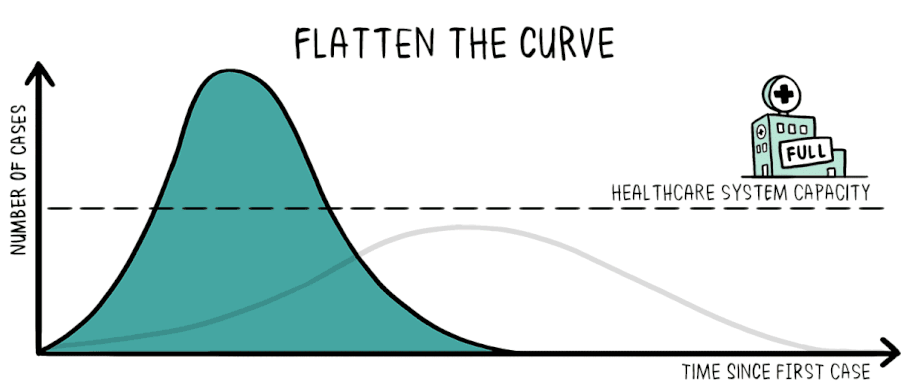Flatten the Curve: Why certain messages catch on
Published on May 4, 2020
When communicating about risk, the hope is to craft appropriate messaging to motivate appropriate action and understanding by the public. This is often challenging, particularly when there is so much scientific uncertainty involved in the risk. Amidst the COVID-19 crisis, many messages have been developed – around proper hand washing and sanitizing hygiene and social distancing, for example – but none have been as effective as the concept of “Flattening the Curve.” Why was that message particularly compelling, and what can we learn about risk and science communication from this experience?

First, the concept of Flattening the Curve takes a complex, dangerous, and frightening concept – an exponential rise in the cases of COVID-19 overwhelming our healthcare systems – and turns it into a simple verbal and visual representation. These two modes of communication (embodied in both the graph and the phrase) reinforce and strengthen one another. From the visual associated with the phrase, you can easily and clearly see that as the virus plays out, the number of cases drastically outstrips our capacity to treat them. Similarly, in the second, flattened curve, you can see how a flatter curve stays below the capacity of a healthcare system. And by juxtaposing these two curves, alongside the same axes, you’re clearly indicating which scenario is preferable. In the animated version above, you can even more clearly see the difference.
Underlying these curves are R0 numbers – the basic reproduction number that represents how contagious a virus is – of 2.5 – 3 in the exponential version and approx. 1 in the flattened version, and much of the key science that makes up our knowledge of modern epidemiology. But none of this is necessary to understand the difference between the first and the second curves. Simplicity is its second virtue: this short phrase captures so much that is important about the situation.
Finally, framing the chart in terms of an action, of “Flattening the Curve” means that it provides the public a form of agency in the outcome, and facilitates personal and societal action on COVID-19. In a previous post, we discussed how choosing active verb forms and emphasizing personal responsibility by using the right subjects could help facilitate action. This framing takes advantage of this strategy give the public clear ways – social distancing, personal hygiene, etc – to contribute to solving a global problem.
Messages around risk are inherently difficult to craft, but “Flattening the Curve” manages to clearly and simply explain the risk both visually and verbally, providing clear avenues for personal action as a means of addressing the problem.
Perhaps Climate Change communication, which has had a difficult time crafting effective messages about risk that facilitate trust, understanding, and action, could learn something from “Flattening the Curve?” Or is that an altogether different type of risk and science communication challenge?

